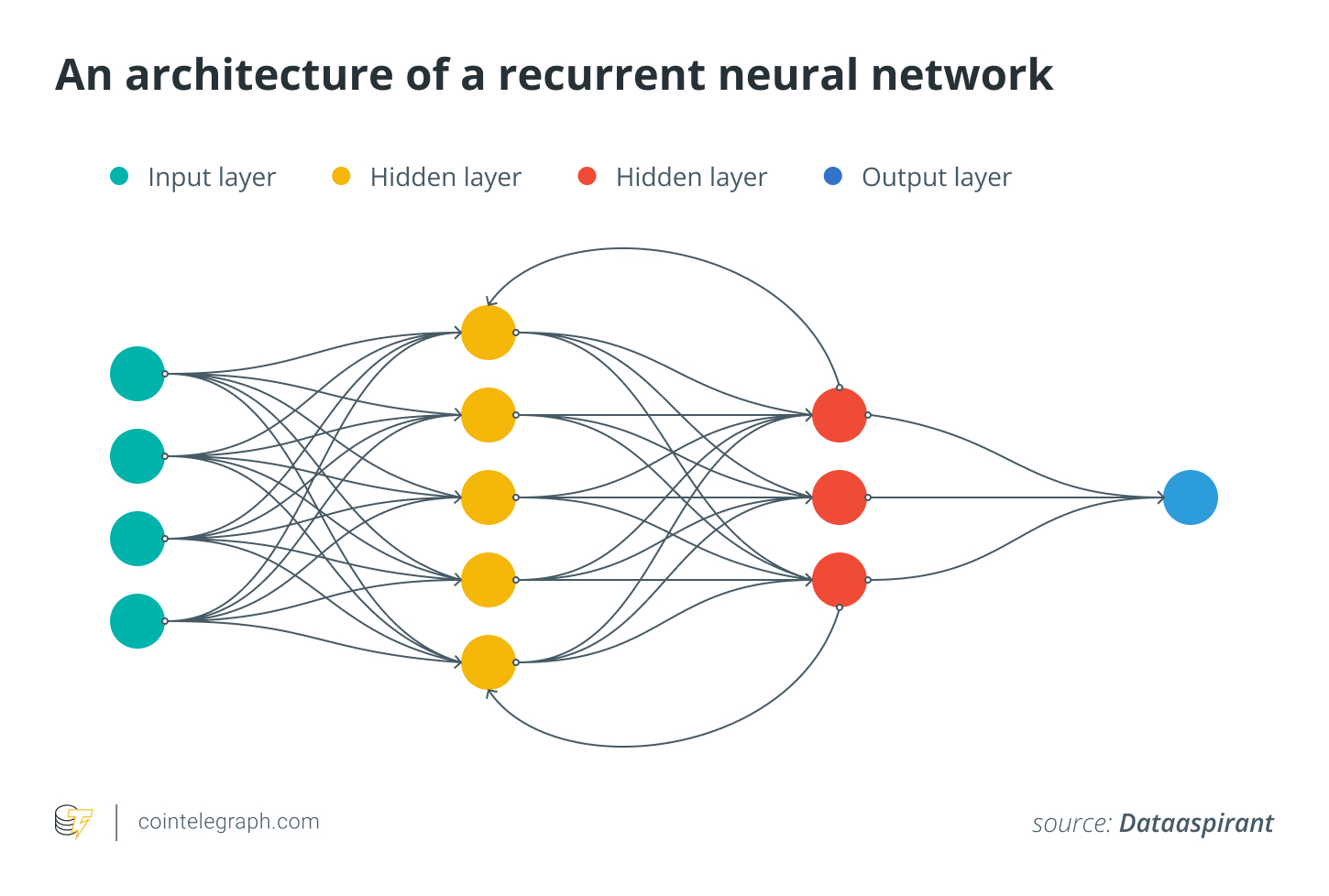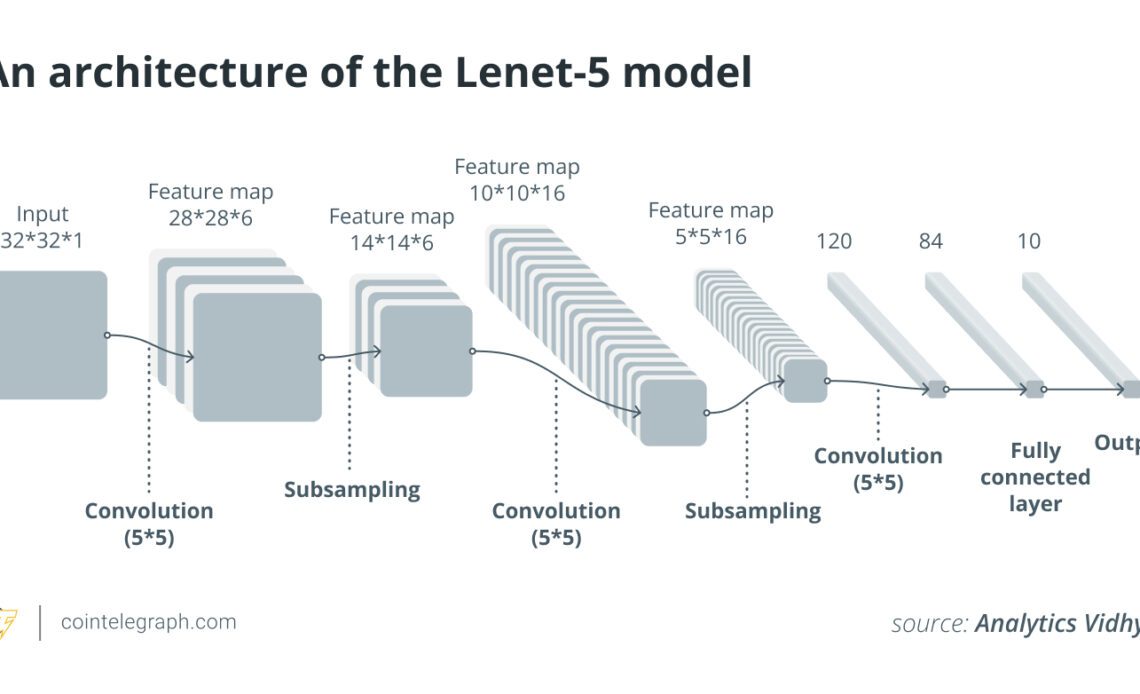Several types of convolutional neural networks exist, including traditional CNNs, recurrent neural networks, fully convolutional networks and spatial transformer networks — among others.
Traditional CNNs
Traditional CNNs, also known as “vanilla” CNNs, consist of a series of convolutional and pooling layers, followed by one or more fully connected layers. As mentioned, each convolutional layer in this network runs a series of convolutions with a collection of teachable filters to extract features from the input image.
The Lenet-5 architecture, one of the first effective CNNs for handwritten digit recognition, illustrates a conventional CNN. It has two sets of convolutional and pooling layers following two fully connected layers. CNNs’ efficiency in image identification was proved by the Lenet-5 architecture, which also made them more widely used in computer vision tasks.
Recurrent neural networks
Recurrent neural networks (RNNs) are a type of neural network that can process sequential data by keeping track of the context of prior inputs. Recurrent neural networks can handle inputs of varying lengths and produce outputs dependent on the previous inputs, unlike typical feedforward neural networks, which only process input data in a fixed order.
For instance, RNNs can be utilized in NLP activities like text generation or language translation. A recurrent neural network can be trained on pairs of sentences in two different languages to learn to translate between the two.

The RNN processes sentences one at a time, producing an output sentence depending on the input sentence and the preceding output at each step. The RNN can produce correct translations even for complex texts since it keeps track of past inputs and outputs.
Fully convolutional networks
Fully convolutional networks (FCNs) are a type of neural network architecture commonly used in computer vision tasks such as image segmentation, object detection and image classification. FCNs can be trained end-to-end using backpropagation to categorize or segment images.
Backpropagation is a training algorithm that computes the gradients of the loss function with respect to the weights of a neural network. A machine learning model’s ability to predict the anticipated output for a given input is measured by a loss function.
FCNs are solely based on convolutional layers, as they do not have any fully connected layers, making them more adaptable and computationally…
Click Here to Read the Full Original Article at Cointelegraph.com News…
